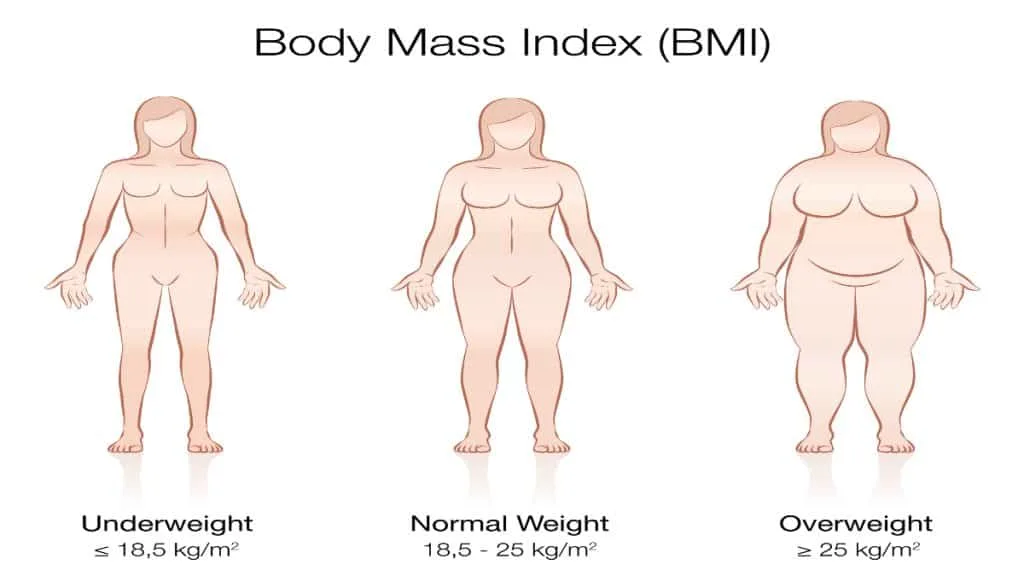A BMI of 23 is considered a healthy BMI for men and women by leading researchers and public health authorities. But is having a “good” body mass index really enough to enjoy good health?
It depends on your body composition. If you’re lean with a 23 BMI score, then you’re naturally going to be healthier than someone who has a BMI of 23 but with loads of fat and minimal muscle mass.
How Does Your BMI Compare?
Is a BMI of 23 good for a woman?

Is a BMI of 23 good for a woman? Yes, a BMI of 23 is good for women in that a female who registers a 23 BMI score has a healthy body weight. A body mass index of 23 is also considerably lower than average for a woman.
But at the same time, it’s important to remember that a simple body mass index score, which is based purely on your height and weight, doesn’t guarantee good health.
While it’s natural for females to store more body fat than males, some women may still have an excessive body fat percentage at a BMI of 23 if they have extremely low amounts of muscle mass, something that’s common in older individuals.
Obviously, since a 23 BMI score is nearly seven BMI points lower than average for a woman, a female with a body mass index of 23 is likely to be quite lean.
Additionally, many women store the bulk of their body fat around their thighs and hips rather than around their waist (like men), which is a much better fat storage distribution for health because it results in less visceral fat.
Is a 23 BMI good for a man?

Is a 23 BMI good for a man? Yes, a BMI of 23 is good for a man because males who have a body mass index of 23 generally have lean physiques and sufficient levels of muscle mass.
Of course, depending on your body composition, a body mass index of 23 may also be unhealthy (although BMI does generally overestimate adiposity in males). [1]
This is especially true if you have barely any muscle mass (at least visually) but loads of body fat, something that’s common among those who lead a sedentary lifestyle.
Because a BMI of 23 doesn’t guarantee good health or fantastic fitness, it’s important to take other measurements to gauge your body fatness and muscularity.
For example, measuring your waist is the best way to assess abdominal obesity.
Likewise, you can measure your thighs (or your arms) to see how much muscle mass you have. This measurement is particularly useful for males in the sense of its accuracy because they tend to store less fat on their legs than women.
What does a 23 BMI look like on a person?

It’s not possible to say for certain what a BMI of 23 looks like on a woman or a man because body composition can vary drastically (and because BMI is not a direct measure of adiposity). [2]
Given the same body mass index, someone with a low body fat level will naturally have more muscle mass than a person with lots of excess fat.
Similarly, a tall person with a body mass index of twenty-three will look very different (likely a lot slimmer) than a short person with a BMI of 23.
Compare your 23 BMI score

When you use an online BMI calculator, you’ll get a specific body mass index score, such as 23.4, 23.5, or 23.8. Obviously, it’s also possible to have a BMI that’s bang on 23.
23.1 BMI
A BMI of 23.1 means that your body weight is in the normal range. While this doesn’t guarantee perfect health, it’s much better than having a really high BMI.
23.2 BMI
A 23.2 BMI puts you comfortably within the healthy weight range. Considering that most people have a body mass index that’s much higher than 23.2, it’s likely that you’re quite lean.
23.3 BMI
If you have a BMI of 23.3, then you’re not too thin or fat. Sure, you might not be extremely muscular, but many people who have a 23.3 BMI have sufficient levels of muscle mass without excess body fat.
23.4 BMI
Having a BMI of 23.4 means that your body weight is normal and healthy for a person of your height. This is true for both men and women.
23.5 BMI
If you have a 23.5 BMI, then you’re five full BMI points above the underweight category, meaning that unless you really lack muscle mass, you’re not too thin. A BMI of 23.5 also puts you comfortably below the overweight classification.
23.6 BMI
Those with a 23.6 BMI have a normal body mass index because a BMI of 23.6 is 1.3 BMI points below the overweight cut-off point. Of course, as with any BMI score, a 23.6 BMI doesn’t guarantee a favorable body composition.
23.7 BMI
A BMI of 23.7 is much lower than average for men and women, even though it is getting toward the upper end of the normal range. If you have a 23.7 BMI and gain a significant amount of weight—whether it be muscle or fat—then you’ll likely move into the overweight category.
23.8 BMI
A 23.8 BMI is considered a normal body mass index by the leading health authorities. Some ethnicities, however, need to maintain a lower BMI than others, meaning that for some people, a BMI of 23.8 could be too high.
23.9 BMI
If you’ve got a BMI of 23.9, then your body mass index is still one full BMI point within the healthy range. Try not to gain any more weight if you have a 23.9 BMI unless you’re putting on lean mass.
Conclusion: What’s it like having a BMI of 23?
Having a BMI of 23 means that you’re slimmer than the average American. However, as explained, people can look very different while having an identical body mass index.
While most of us fall somewhere in between the very lean and very fat body types, you can have lots of muscle mass and loads of body fat, all while registering a 23 BMI score.
For example, a weight lifter with an average build might have a good amount of muscle mass but minimal body fat, giving them a BMI of 23.
On the other hand, a sedentary person could have a body mass index of 23 due to their lack of muscle mass and high body fat level due to their inactivity and inefficient metabolism.
References
- Pasco, J. A., Nicholson, G. C., Brennan, S. L., & Kotowicz, M. A. (2012). Prevalence of obesity and the relationship between the body mass index and body fat: cross-sectional, population-based data. PloS one, 7(1), e29580. https://doi.org/10.1371/journal.pone.0029580
- Rothman K. J. (2008). BMI-related errors in the measurement of obesity. International journal of obesity (2005), 32 Suppl 3, S56–S59. https://doi.org/10.1038/ijo.2008.87

